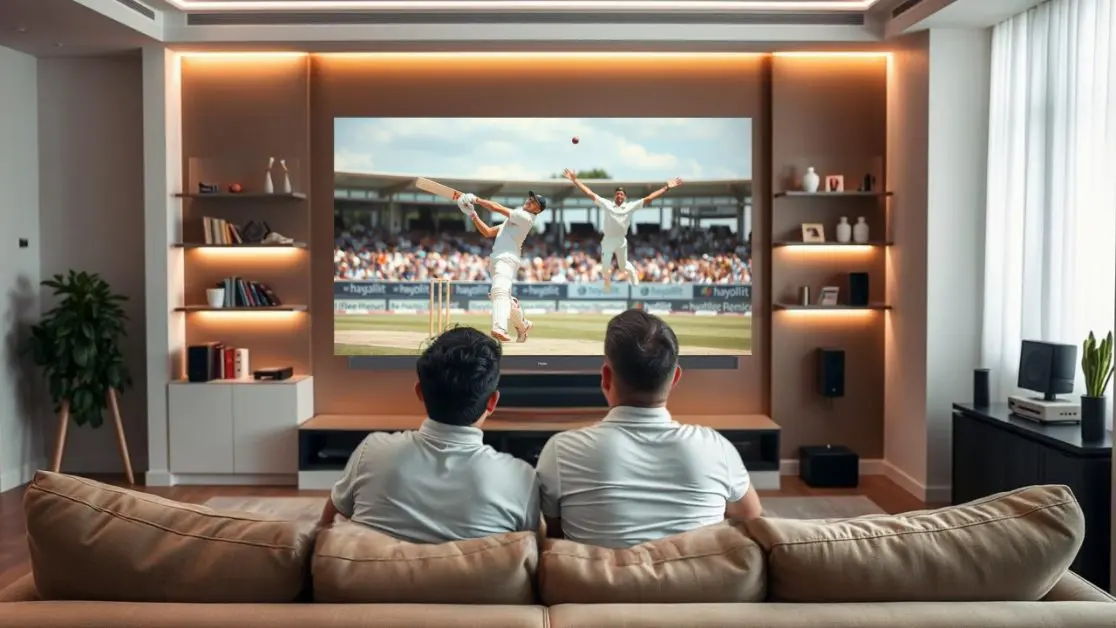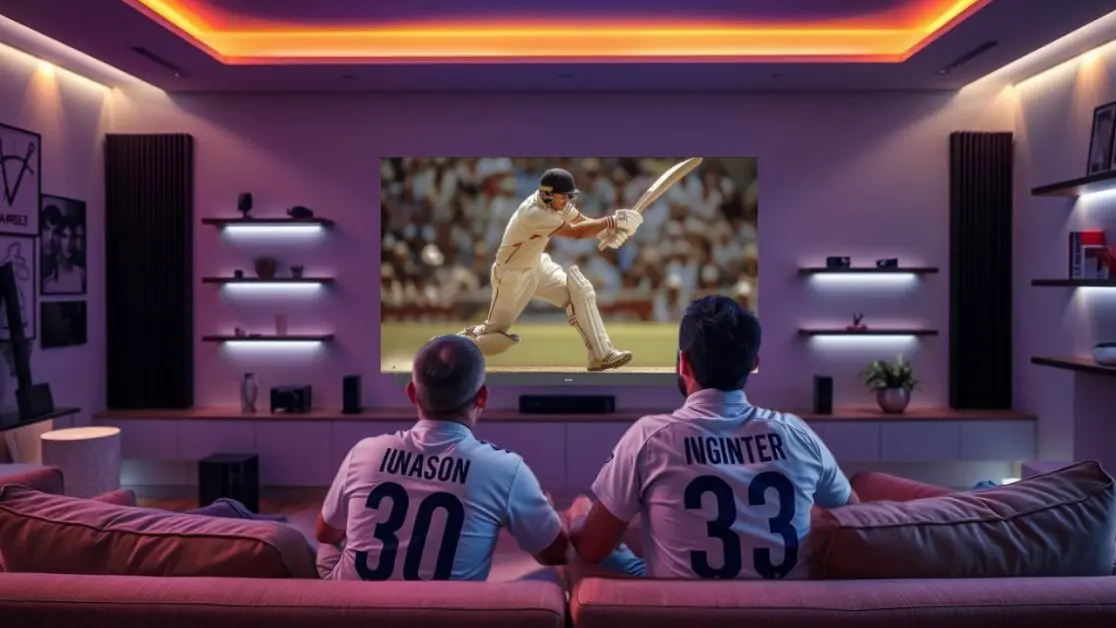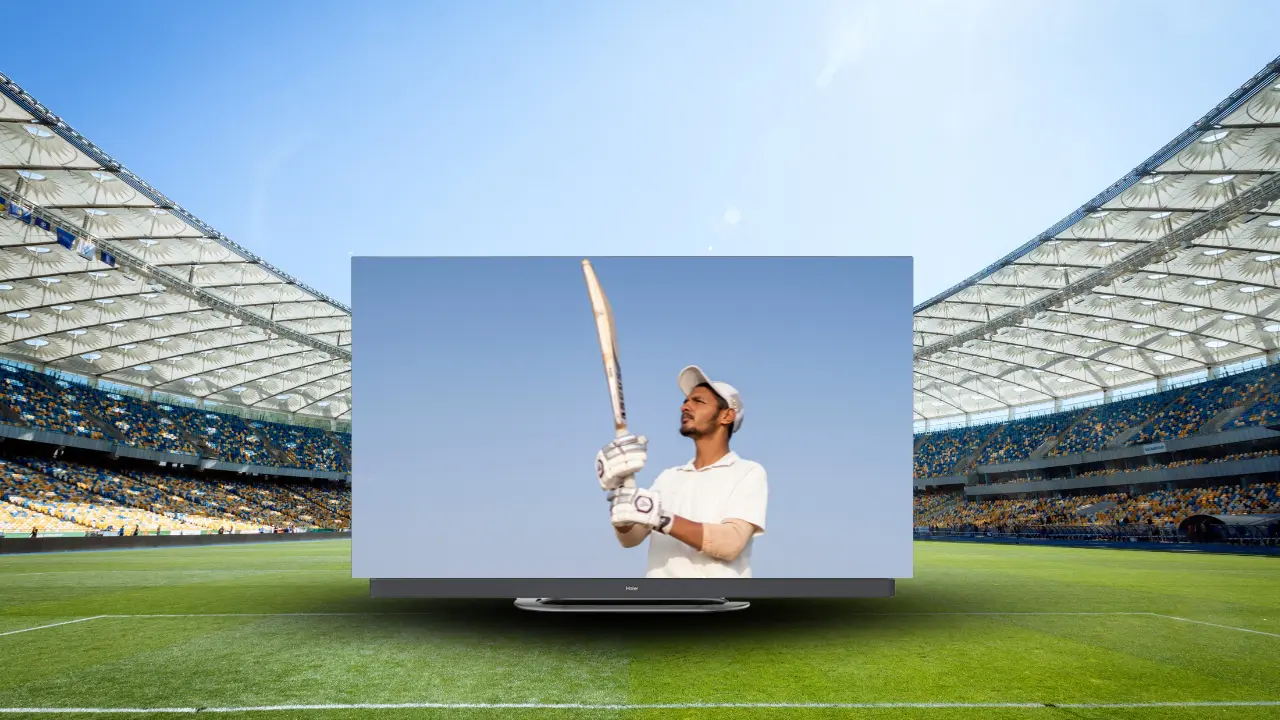Test cricket has never been about instant gratification.
It’s about the slow reveal. The psychological duel. The hidden build-up that only shows itself if you’re patient enough to see the layers unfold.
But here’s the problem: most screens aren’t built for layers.
They’re built for brightness, not subtlety. Speed, not nuance.
And if your display doesn’t understand depth, it flattens the game into a blur of runs, wickets, and pixels that move too quickly or too stiffly.
This isn’t just about cricket. It’s about how we watch anything that takes its time.
- You don’t rush through a novel by Jhumpa Lahiri.
- You don’t fast-forward a Rajasthani thali.
- You don’t skip the slow-mo replay of a bowler setting up a batter over four overs.
Some things are built to be layered.
And when you experience them on a screen that doesn’t honour that structure, you don’t just lose resolution.
You lose meaning.
Test cricket rewards patience. Your TV should too.

Watch a Day 2 morning session in Chennai.
Low bounce. Reverse swing. Batter grinding.
Now watch a Day 5 evening spell in Cape Town.
Cracks opening up. Shadows long. Spinners in play.
Same match, entirely different mood.
That’s the magic of Test cricket. It doesn’t just happen, it develops.
So what kind of display honours that depth?
One that treats cricket like art. Not just sport.
Your screen is your second commentator
Think about it.
- A slight change in field placement
- The bowler’s angle of release
- The sweat on a batter’s forehead as he checks the scoreboard
These aren’t stats. They’re signals.
They tell you where the game is headed before the next ball is bowled.
But on the wrong screen? These signals vanish.
They’re too dark, too fast, or too blurry to matter.
So you’re watching cricket, but not understanding it.
Layered cricket needs layered contrast.
Here’s where OLED comes in.
Traditional LED TVs use a backlight. Which means blacks aren’t truly black, they’re just less white. Shadows merge. Fine details dissolve.
OLED panels, on the other hand, light up each pixel individually.
So when it’s dusk at Wankhede and the fast bowler steams in with sweat glistening off his neck, you see that moment, not just the outline.
Because layered stories need layered contrast.
Not every movement is fast. But every movement matters.

In a T20 game, the camera barely sits still. It’s fireworks, flicks, and frenzy.
In a Test match, it’s the pause between overs. The walk-back to the top of the run-up. The bowler fixing the seam for swing.
Motion isn’t speed here, it’s narrative.
And a good TV must know the difference.
Too much motion smoothing? The game looks artificial.
Too little? It turns into a slideshow.
The solution? Adaptive refresh rates.
Like the 120Hz and 144Hz displays on modern Haier TVs.
They shift gears only when needed, just like a good bowler.
Details make the difference
You don’t notice them at first.
But they define the match.
- The rough patch outside off stump
- The tightness of the slip cordon
- The signals from the dressing room balcony
All of these are moments inside moments.
And they need:
- Sharper resolution
- Balanced dynamic range
- True-to-life colour tuning
Without these? You’re just watching numbers on a screen.
Cricket isn’t flat. Neither is your living room

Let’s talk about real-world conditions. Tier 1 or tier 2 city, it doesn’t matter.
- One bulb overhead.
- Fan running.
- Daylight hitting from the side.
- Sometimes the match continues through lunch, through chai, into dinner.
Your TV needs to adapt.
Dolby Vision IQ does exactly that, auto-adjusting picture settings based on ambient light. Whether it’s sunny outside or power just returned post-outage, you see cricket the way it was shot.
Good displays don’t just show cricket. They honour it.
This isn’t nostalgia talking. It’s tech meeting temperament.
Haier’s new 144Hz OLED TV is built for stories that unfold, not explode.
What you get is:
- OLED panel for true blacks and infinite contrast
- 144Hz refresh rate that adapts to slow sweeps and quick singles alike
- Dolby Vision IQ + HDR10+ to auto-calibrate for your living room light
- Harman Kardon 50W speakers that let you hear stump mics, not just background music
- Hands-free voice control because you shouldn’t fumble the remote mid-over
- Google TV interface that curates cricket highlights, documentaries, and match previews, all in one place
The world moved to binge-watching. Cricket stayed loyal to the slow burn.

It’s not just Test matches.
It’s a philosophy of watching.
- The idea that some things earn your time.
- That some victories take five days.
- That some tension builds not in a single frame, but across sessions.
And when you watch something that is layered, on a screen that only understands speed?
You miss the story.
Three questions to ask before your next screen upgrade
Let’s not get lost in specs. Let’s get practical.
1. Can your TV show deep blacks without crushing shadow detail?
If yes, you’ll finally see the bowler’s follow-through in evening light, and not as a silhouette.
2. Does it adapt to changing light in your room, or force you to pull curtains every time?
If yes, it respects the reality of Indian homes, where light isn’t theatre-level but cricket-level.
3. Can it keep up with both slow-motion replays and real-time sixes without judder?
If yes, then it’s layer-aware, not just spec-rich.
What this really teaches us: Screens aren’t passive anymore.
They’re interpreters. Translators. Amplifiers.
They decide what you see, what you feel, and sometimes, what you miss.
And when the content is as deep as Test cricket?
A good screen doesn’t just keep up. It adds value.
So what’s the takeaway?
Test matches aren’t just long, they’re layered.
They shift tone. They build tension. They ask more from both player and viewer.
So your TV should do more than display.
It should listen. Adapt. Translate. Respect the story being told.
And if it can’t?
You’re not watching the game.
You’re just watching time pass.
Make room for a TV that understands rhythm, not just resolution!
The Haier 144Hz OLED is more than a spec sheet. It’s a cricket companion.
Not for the casual scroller. But for the viewer who watches from ross to stumps.
Who pauses to study field placements.
Who knows that a maiden over is sometimes more thrilling than a hat-trick.
Because they know, depth isn’t loud.
It’s layered.
And the right screen brings every one of those layers to life.

